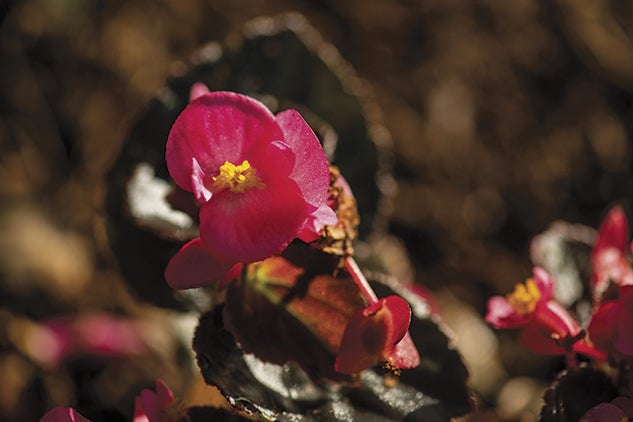Taking Root
When the pandemic put a pause on my professional life, I turned my energies toward home and discovered a new pleasure in gardening.
When the COVID-19 pandemic invaded our city and sent us to our houses to practice social distancing, it was a shock to our humanity. Never in my life had I been forced to keep away from others and limit my movements outside the home.
I found my salvation in gardening, an earthy art that had only been on the margins of my existence. In the past, gardening meant trimming branches, pruning flowers, watering the lawn and planting colorful annuals in the spring — the bare minimum to beautify the house. It was as if nature, knowing that I had free time to spare, beckoned me to return to my roots. I bought a book, “Beginner’s Illustrated Guide to Gardening: Techniques to Help You Get Started,” and set out to learn how to turn my pale hands into a darker shade of green.
My primary target was the backyard. Weeds had overtaken it, moving imperceptibly from the fence to my back door until they had choked all the grass to death. The roses and azaleas on the border had withered away from lack of watering. Branches from overgrown trees hung over the fence and shrubs grew wild. It was a pathetic sight. With shovel in hand, I started to scrape off all the weeds — a painstaking job, especially under a beaming sun. After a couple of days, the yard was clean of unwelcome intruders. A patch of dusty, gray soil laid exposed like a large bald spot.
I covered the patch with black soil mixed with manure. With the help of a yardman, I put down sod, sprinkled pellets of fertilizer and watered the grass twice a day until the blades turned a dark green, indicating the grass had started to take root. Even though the job was hard on my back and hands, my satisfaction was immense; I had improved a tiny piece of earth.
Next, in between the garage and yard — a space 16 feet long and 2 feet wide — I planted a row of lavender in honor of the trip to France that my wife and I took a few years ago. I remember it vividly. As we approached a village in the southern part of the country, we stopped along the roadside to see the rows upon rows of lavender covering the rolling hills, turning the landscape into a purple haze of beauty. The five lavender shrubs in my backyard will always remind me of that special time.

Van Gogh will also be remembered. When we were in France, we visited Arles, where he created many of his famous paintings. I decided to plant sunflowers to honor this painter who was fascinated by the tall, lanky flower that seeks the sun. I put the seeds in empty egg cartons filled with potting soil, fearing that if I planted them directly in the garden, the squirrels would dig them out and eat them. After the seeds sprouted, I transferred 50 of them to the garden, making little holes in the soil and gingerly placing the delicate sunflower stems in each one — all the while suffering pangs of pain in my back and knees.
Knockout roses, Mexican heathers, begonias, wildflowers, marigolds, geraniums, petunias, periwinkles and larkspurs now decorate the back and front of my house. Each planting gave me a certain pleasure. I felt the soil between my fingers as a source of energy that was giving plants and flowers a boost to reach their full potential. I felt I was giving flowers a chance to grow in their mission to add color and scent to the world.
“You don’t discover your own gardening potential until you have gardenable space of your own, if only a humble window box,” writes Penelope Lively in her book, “Life in the Garden.” I have found my space and am discovering my potential as a gardener thanks to the deadly virus. To be a successful gardener, I’ve learned that you have to pay close attention to the garden and become attuned to its needs. Maybe, through the pandemic, the universe is telling us to slow down and pay attention to the planet.
Gardening has taken root in me. Whenever I go outside to tend my young garden, I feel an attachment and fondness to the flowers and trees. I take care of them, and they in turn add color to my life. I’ve developed a sensitivity toward this wildlife to the point that if a flower withers under my care, a sense of failure tugs at me.
As I become more successful, though, I want to make my garden lush. Plans are in the works to add decorative trees — Japanese maples, redbuds and crape myrtles — along the back and side fences, and to plant blue and white hydrangeas as shrubs between the trees.
Magazines and books on gardening litter my desk. I’m reading “Plants for Houston and the Gulf Coast” and I have ordered “Botany for Designers: A Practical Guide for Landscape Architects and Other Professionals.” I am by no means a professional gardener, just someone who has found a new passion amid an unprecedented time in all of our lives.
David D. Medina is the director of Multicultural Community Relations in Rice’s Office of Public Affairs and a Rice Magazine contributor.
